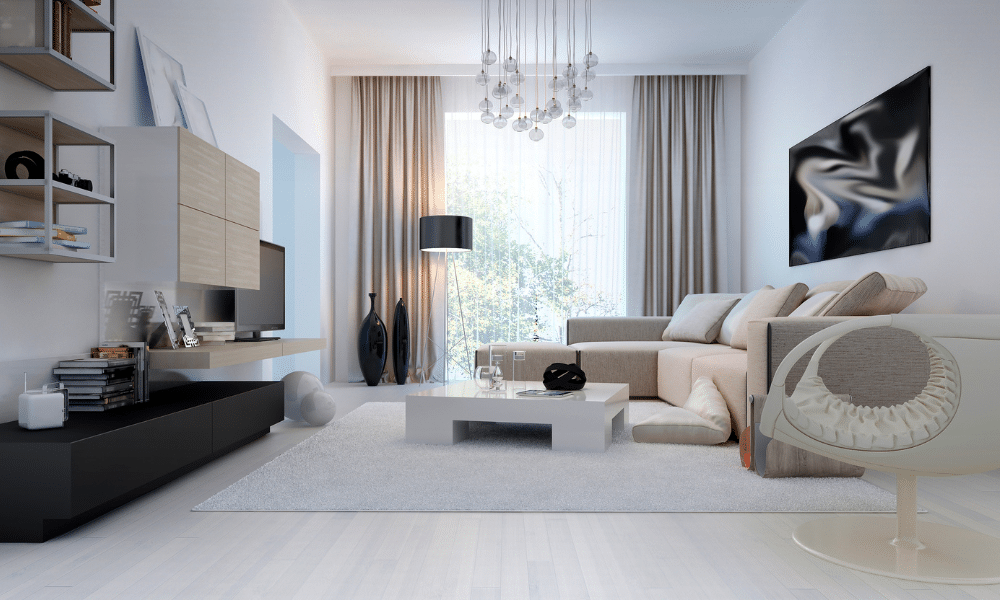The living room rug serves as both a centerpiece and a subtle accent that can significantly alter the ambiance and perceived dimensions of a room. Choosing the right rug size not only complements your interior decor but also harmonizes with your living space to create a cohesive and inviting atmosphere. Understanding the dynamics of rug size can help elevate your living room from merely functional to a statement of personal style.
Measuring Your Space
Before you select a rug, it is essential to accurately measure your living space. This task involves more than just noting down dimensions; it requires a strategic approach to accommodate furniture placement and ensure the carpet proportionately fits within the room’s overall layout. Always remember to leave a buffer of exposed flooring around the carpet to frame the space effectively, enhancing the room’s aesthetic and functional flow.
Defining Zones with Rugs
In open-plan living spaces, rugs can serve as visual cues that differentiate various functional areas without the need for walls. By selecting appropriate carpet sizes, you can create distinct zones for dining, relaxing, or socializing. A well-placed rug can transform an expansive area into a cozy nook, balancing the scale and utility of the space with visual warmth and texture.
Finding the Perfect Proportions
The art of rug sizing is akin to a delicate dance between the dimensions of the room and the furniture within it. Each style, whether traditional or modern, demands specific considerations to achieve the desired aesthetic impact. A properly sized carpet brings a sense of harmony and proportion, subtly guiding the eye across the room and enhancing the overall emotional resonance of the space.
Common Rug Size Guidelines
Standard rug sizes, such as 5×8 or 8×10 feet, are commonly used due to their versatility in various living room layouts. When choosing between a smaller or larger carpet, consider how each will affect the room’s function and flow. Tailoring these guidelines to accommodate your lifestyle and aesthetic preferences ensures that the rug enhances both comfort and design.
Layering Rugs for Style
Layering rugs introduces an element of depth and texture, providing a unique opportunity to blend different colors, patterns, and styles. This technique allows for flexibility in updating your room’s look by simply adjusting the top layer. Effective layering adheres to a thoughtful selection of complementary hues and textures that enrich the living space without overwhelming it.
Material Matters
The choice of rug material influences both its functionality and aesthetic appeal. From the lush comfort of wool to the durability of synthetics, each material offers distinct benefits and drawbacks. Consider how different textures reflect light or offer comfort underfoot, and how these characteristics align with your practical needs and style preferences.
Personalizing Your Choice
Beyond standard options, there is a world of custom rug sizes, shapes, and designs that allow you to express your unique style. Whether it’s a bespoke, unusually shaped carpet that challenges conventional aesthetics or a tailored size that fits your space perfectly, these personalized options encourage you to blend practicality with your creative vision.
Conclusion
Selecting the right rug size is a critical decision that influences the overall look and feel of your living room. This guide aims to empower you with the knowledge to choose a carpet that perfectly balances function, comfort, and aesthetic appeal. Embrace the process and make a choice that transforms your living room into a reflection of your personal style and comfort—your ideal living space awaits.

